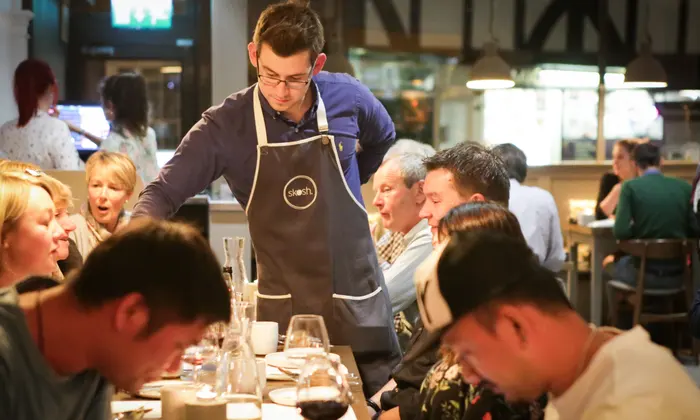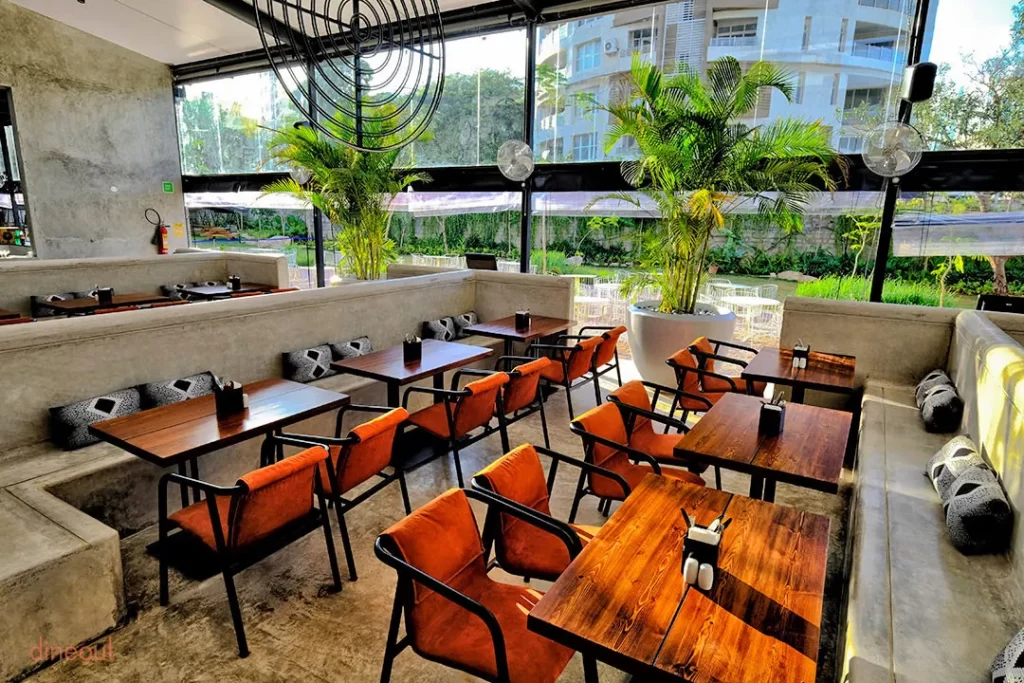Digital Marketing Strategies for Restaurants: As the restaurant industry continues to evolve, it’s important for restaurants to stay ahead of the curve and take advantage of the latest digital marketing strategies to ensure success. As digital marketing is becoming a preferred option for many businesses, it is essential for restaurants to stay on top of the latest trends and strategies to increase their reach.
Table of Contents
In this blog post, we explore 5 digital marketing strategies for restaurants in 2023 that will help them stay ahead of the competition and increase their success.
Benefits of Digital Marketing for Restaurants

Digital marketing is the process of using digital channels (such as the Internet, email, and social media) to promote a business or product. An ever-evolving form of marketing that enables businesses to reach their customers in new and innovative ways.
Digital marketing is especially beneficial for restaurants. It allows them to reach new customers through online advertising, create engaging content to build loyalty, and use data to track customer behavior and preferences.
Moreover, it helps restaurants stay competitive in an increasingly crowded market by providing a cost-effective way to create visibility and reach potential customers.
For example, restaurants can use social media platforms to advertise their specials and discounts or use email campaigns to inform customers about upcoming events.
Digital marketing enables restaurants to interact more directly with customers, allowing them to build relationships and gain valuable feedback.
5 Digital Marketing Strategies for Restaurants in 2023
As the restaurant industry evolves, digital marketing strategies for restaurants are becoming more important to success. With the rapid development of digital technology and the emergence of digital platforms, restaurants need to stay ahead of the curve by adopting digital marketing strategies to stay competitive in the industry.
In this article, we cover five digital marketing strategies for restaurants in 2023 and beyond.
1. Create a website:
Having an up-to-date website is essential to being competitive in the restaurant industry. Websites give customers a glimpse into a restaurant’s atmosphere, menu and services. Additionally, a website can help boost search engine rankings and drive more traffic to a restaurant. Investing in a professional website design can help make a lasting impression on potential customers.
2. Use video content to engage customers:
Video content is an effective way to engage customers and bring them into a restaurant as part of digital marketing strategies for restaurants. Videos are a great way to showcase a restaurant’s atmosphere, introduce new menu items, and highlight special events and promotions. Videos can also be used to build relationships with customers by allowing them to connect more deeply with the restaurant.
3. Use Social Media Platforms:
Social media platforms are great for connecting with customers and building brand awareness. Restaurants can use these platforms to post updates, engage with customers, and promote special events. Additionally, social media offers great opportunities to reach new customers and stay on top of existing ones.
4. Invest Time in Local SEO (Google Maps):
Google Maps is a great way to increase visibility and drive more customers to a restaurant as part of digital marketing strategies for restaurants. By optimizing local SEO, restaurants appear higher in search rankings when customers search for nearby restaurants. In addition, optimized local SEO helps show the restaurant on Google Maps when customers search for a specific type of cuisine or location.
5. Experiment with re-targeting:
Re-targeting is a powerful tool to stay connected with potential customers. By using re-targeting, restaurants can reach customers who have previously visited a website or interacted with social media accounts. Re-targeting is a great way to engage with prospects and increase your chances of converting them into customers.
Also Read: Who are ZoomInfo’s Top 5 Competitors Who Offer a Better Price?
These five digital marketing strategies will help restaurants stay competitive in the industry and increase their visibility online in 2023 and beyond. By investing in website design, using video content, using social media platforms, optimizing local SEO and experimenting with re-targeting, restaurants can build stronger relationships with customers, reach new audiences and increase their sales.
Tips for Implementation
As a restaurant owner, it is important to stay ahead of the competition and stay up-to-date with the latest digital marketing trends and digital marketing strategies for restaurants. In this blog, we discuss five digital marketing strategies for restaurants in 2023 and helpful tips for implementation.
Research target audience
The first step in any successful digital marketing strategy is researching your target audience. You need to know the demographics and psychographics of your target market and design your digital marketing campaigns accordingly. Knowing the common characteristics of your target customers will help you create more effective campaigns and increase your ROI.
Create a content calendar
Once you’ve identified your target audience, the next step is to create a content calendar. A content calendar helps you plan content ahead of time and helps ensure consistency across all your digital marketing efforts. You should also ensure that you include relevant content and keywords to target the right customers.
Measure and analyze results
Measuring and analyzing the results of your digital marketing campaigns is essential for any restaurant. By tracking the performance of your campaigns, you can identify which strategies are working and which ones need improvement. You can also use these results to develop new strategies and adjust your content calendar accordingly.
Develop a budget
Having a budget is essential for any digital marketing strategy. You should develop a budget for all your digital marketing campaigns and make sure you are not overspending. It also ensures that you can track the performance of your campaigns and allocate resources accordingly.
Keep up with the trends
Finally, it is important to keep up with the latest digital marketing trends. Staying ahead of the competition is key in the restaurant industry, and the digital world is no different. Make sure to stay updated on the latest digital marketing trends and adjust your strategies accordingly.
To recap, these are five digital marketing strategies for restaurants in 2023 and useful tips for implementation: research target audiences, create a content calendar, measure and analyze results, develop a budget and keep up with trends. By following these strategies, you can ensure that your restaurant is ahead of the competition and you can increase your ROI.

